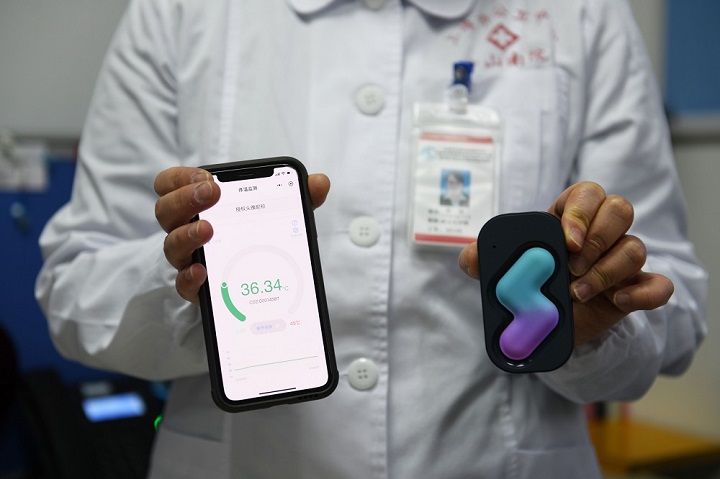It isn’t breaking news that hospital systems are at an economic inflection point. Increasing labor and supply costs balanced against increased emergency room visits, longer lengths of stay and decreased operating room revenue is adversely impacting many systems’ bottom lines. There aren’t easy answers, but there are technologies that can contribute to positive patient outcomes without incurring excessive cost.
COVID-19 forced myriad changes to healthcare delivery throughout the care cycle. Patients are interacting with providers differently – sometimes delaying care, while in other cases choosing virtual care options. According to Kaufman Hall & Associates halfway through 2022 hospital operating margins are still below pre-pandemic levels, despite a pent-up demand for services by patients who resisted earlier treatment. Telemedicine and technology such as remote patient monitoring (RPM) are viable options to address current and future needs.
The reality of implementation
Research from Deloitte indicates that RPM is expected to save the U.S. healthcare system $200 billion over the next 25 years, which sounds promising, but what does that really mean? RPM offers a more effective method of collecting information to provide care, but there are initial costs in equipment, training, process adaptation, etc., even if the capital outlay tends to be lower than conventional medical equipment. Implementing a new technology isn’t immediate so there’s the need to carry existing systems while phasing in the new one. The same situation occurs in any business, not just healthcare so some of the same challenges and relevant solutions apply.
However, for healthcare systems there’s a tangible multi-level benefit of implementing RPM technology. Beyond dollars, when RPM technology is used successfully, the logistical efficiency means patients don’t have to drive back and forth to the hospital, and more patients can be seen during a given shift, a key metric given the current staffing issues in many facilities. Speed and access to quality data can also be improved with RPM. For example, vital signs and other physiological parameters can automatically be captured from patients in quarantine situations and routed to the caregiver without unnecessary physical contact. This option increased in use substantially during the COVID-19 pandemic to ensure continuity of care without undue risk to providers.
With acute care for a specific incident or condition, RPM can facilitate a patient’s earlier discharge from the hospital or inpatient facility if the condition can be effectively monitored from home. Using RPM to monitor discharged patients can positively reduce a patient’s length of stay and help prevent patients unnecessarily returning to the emergency room. For 2021, Kaufman Hall reports “patients seeking care during the past year also required longer hospital stays, with full-year adjusted discharges for the industry up 6.9 percent over 2020, adjusted patient days up 11.8 percent, average lengths of stay up 3.5 percent, operating room minutes up 8.3 percent and emergency department visits up 10.9 percent.” RPM technology can provide an automated and continuous means to check on the patient and alert the caregiver of ongoing conditions or a potential issue.
The budget impact
There’s no denying that healthcare is a business and one that can involve layers of bureaucracy so adding new devices and technology can be tough to get approved, purchased and implemented. But healthcare systems must efficiently manage care expenses to be profitable, so optimizing resources is critical. To add RPM, it can be difficult to justify the ROI for using new technology to replace an existing process. However, using RPM to add a new revenue source may be more attractive for a hospital system. Here’s an example. Cardiologists have used Holter monitors for decades but that still requires multiple in-person patient visits as well as a technician downloading and reviewing the data. While a Holter could be the best choice for some patients, adding an option for mobile telemetry based cardiac monitoring means an additional service option that’s more appealing to some demographics.
McKinsey & Company reports that “$250 billion of U.S. healthcare spend could potentially be shifted to virtual or virtually enabled care,” especially among patients who’ve grown up with technology. That “virtual care” must go beyond video calls and telemedicine for it to significantly impact healthcare systems. There are compelling applications to use new technology. Think about when computers first became mainstream. Telling an accounting manager she can do myriad novel things with a computer is great – conceptually. But realistically it doesn’t matter unless one of those functions fulfills a compelling need. When accounting departments learned they could use a computer to digitize patient billing to automatically generate, send and track invoices, it saved countless hours of staff time and improved accuracy as well as efficiency. That savings and improvement justified the cost of the equipment, the software, and the training. RPM is similar. For example, if vitals can be monitored and the data used to alert oncologists to a proclivity toward neutropenic fever in chemotherapy patients, proactive care can help prevent hospital readmission.
According to the Hospital Readmission Reduction Program (HRRP), Medicare payments are decreased to hospitals that have disproportionately high readmissions. Specific conditions cited include Acute Myocardial Infarction, Chronic Obstructive Pulmonary Disease, Heart Failure, Pneumonia, Coronary Artery Bypass Graft, and Surgery for Elective Primary Total Hip Arthroplasty and/or Total Knee Arthroplasty. RPM offers viable options to monitor and provide data related to each of those conditions, representing opportunities to provide significant patient analysis for proactive care.
A study of Washington state hospitals showed “as readmissions continue to happen, a gradual increase in expenses due to greater use of resources may lead to decreased profitability.” Doesn’t it make both medical and financial sense to do as much as possible to prevent patient readmission?
The bigger picture
With RPM, it’s also possible to have too much of a good thing. Continuous monitoring provides an enormous amount of raw data. The right application will ultimately show streamlined data that’s applicable to the situation. Consider self-driving cars. The onboard sensors generate copious amounts of data, but software analyzes and filters just what the driver needs to see. Similarly, continuous RPM monitoring results in mounds of data but the right software and algorithm make the data useful without being overwhelming.
Engaging the appropriate biometric monitoring platform ensures the data is processed for analysis without overwhelming those providing care. The comprehensive monitoring system must align with the needs of those within the healthcare system. Patients with chronic conditions could require more ongoing monitoring to keep issues in check while those with acute situations can benefit from earlier discharge while ensuring conditions continue to be monitored. In either case, patients still receive proper supervision without staying in the hospital.
While all the studies and statistics have a point, whether RPM technology is right for a particular healthcare system comes down to specifics. This can be a classic case of ensuring the right person with decision-making power has access to the knowledge of what RPM can do, to be able to see beyond the initial investment to the bigger picture. It takes looking at more than the reimbursement that varies between Medicare payouts and private insurance to analysis of the real cost of re-hospitalization to ascertain the financial benefit to the overall hospital system. When that’s a fit, the hospital benefits through better data, better informed providers and ultimately, more satisfied patients.




















